Microgreens an emerging type of specialty vegetable that people can grow at home from the seeds of vegetables, herbs, or grains, or ultimately, buy them fresh and already harvested from specific shops. To put it in a more simple manner, microgreens are the seedlings of vegetables and herbs, and for a long time, people have commonly been growing both mustard and cress on their kitchen window ledges. For quite some time already, scientists have declared microgreens to be a functional food that can provide people with key nutrients in a practical way, and some even consider microgreens to be a superfood – meaning a type of food that’s assumed to confer health benefits from an exceptional nutrient density. Ultimately, microgreens are fun to grow, tasty to eat, and extremely healthful when included in your diet. So, if you’re looking to grow some fresh microgreens at home, the Hamama Grow Kit is a great way to do so.
The Hamama Grow Kit is a fail-proof indoors microgreens growing kit that allows you to grow microgreens at home with extreme ease, as well as with no hassle whatsoever.
To use it, literally all you have to do is to add some water to its included re-usable (and washable) tray and then simply wait a few days for its non-GMO seeds to grow. Best of all, this indoors microgreens growing kit even works in low light conditions.
MAIN REASONS TO GROW MICROGREENS
Now, you might asking yourself what are the main benefits of growing and then including microgreens in your regular diet.
1) Easy to Grow
First of all, microgreens are extremely easy to grow. You can either grow them outside, in a garden bed or in simple containers inside your home, and that can be done by having those same containers close to any windows that catch a bit of sunlight on a daily basis.
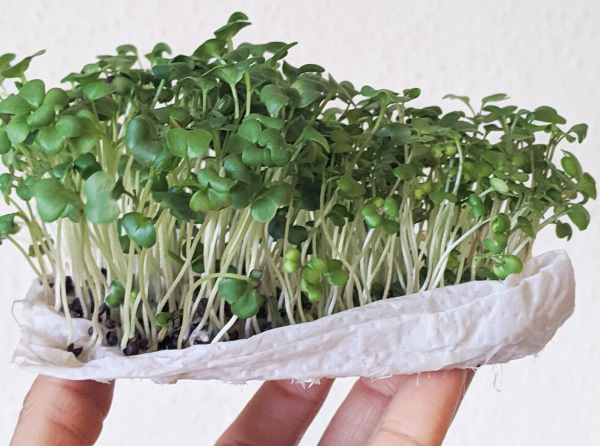 2) Healthy Choice of Food
2) Healthy Choice of Food
Secondly, microgreens are greatly packed with nutrients, and these can be grown from many different types of seeds. Because of that, their taste can sometimes vary slightly, so the taste of your microgreens will greatly depend on the variety of your choice of seeds.
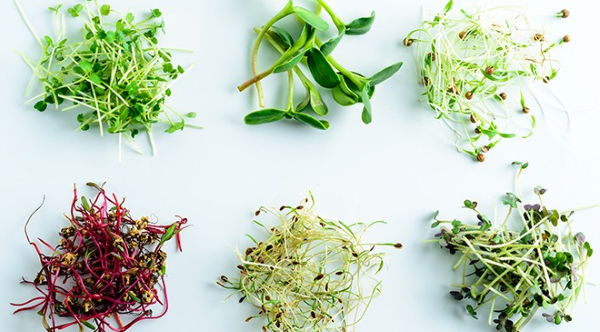
The most popular varieties of microgreens come from seeds of the following plant families:
- Amaranthaceae family – amaranth, beets, chard, quinoa, and spinach.
- Amaryllidaceae family – chives, garlic, leeks, and onions.
- Apiaceae family – carrot, celery, dill, and fennel.
- Asteraceae family – chicory, endive, lettuce, and radicchio.
- Brassicaceae family – arugula, broccoli, cabbage, cauliflower, radish, and watercress.
- Cucurbitaceae family – cucumbers, melons, and squashes.
- Lamiaceae family (includes most common herbs) – mint, basil, rosemary, sage, and oregano.
- Poaceae family (includes grasses and cereals, as well as legumes) – barley, corn, rice, oats, and wheatgrass, as well as beans, chickpeas, and lentils.
Now, while both their taste and nutrient contents may vary slightly, most varieties of microgreens tend to be rich in potassium, iron, zinc, magnesium and copper, and that’s exactly what makes this specialty vegetable a great choice of food (or superfood) to have included in your diet.
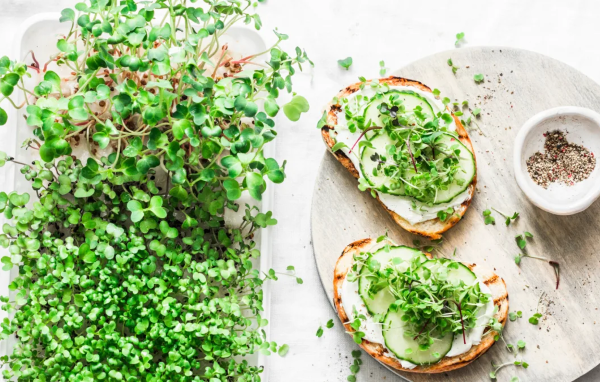
Furthermore, the nutrient content of microgreens is highly concentrated, which means that they can often contain higher vitamin-, mineral- and antioxidant-levels than the same quantity of their mature green counterparts (meaning their “fully-grown” form).
A past scientific research that compared microgreens to more mature plants even reported that the nutrient levels in microgreens can be up to nine times higher than those found in mature greens.
3) A Rich Source of Antioxidants
And that’s not all, as microgreens are also a great source of beneficial plant compounds, like antioxidants for example, which is just one of the many substances that can help to protect your cells against free radicals. These free radicals are special molecules produced when your body breaks down food or whenever you’re body is exposed to tobacco smoke or radiation, and ultimately, they can play a role in heart disease, cancer, and many other diseases.
Because of that, having a decent and reliable source of antioxidants included in your diet can help you to stay safe from contracting some of those specific diseases, and microgreens can give you just that.
This scientific research reported that microgreens can also contain a wider variety of polyphenols and other antioxidants than their mature counterparts.
Now, back to the Hamama Grow Kit. With the Hamama Microgreens Growing Kit, you can have a very simple and easy way of including fresh and healthy veggies in your diet.
So, with all that said, and without further ado, let’s have a look at this fail-proof indoors microgreens growing kit and check everything that the Hamama Grow Kit can offer you.
WHAT’S IN THE BOX?
The Hamama Starter Kit for growing your microgreens at home includes a reusable washable (and dishwasher-safe) plastic growing tray, easy-to-follow instructions (which provides you with great guidelines for both beginners and experts that are looking to grow their microgreens at home), and 3 Seed Quilts of your choice (buyers can choose their 3 Seed Quilts from exactly ten different options, including Super Salad Mix, Refreshing Cabbage, and Spicy Daikon Radish.
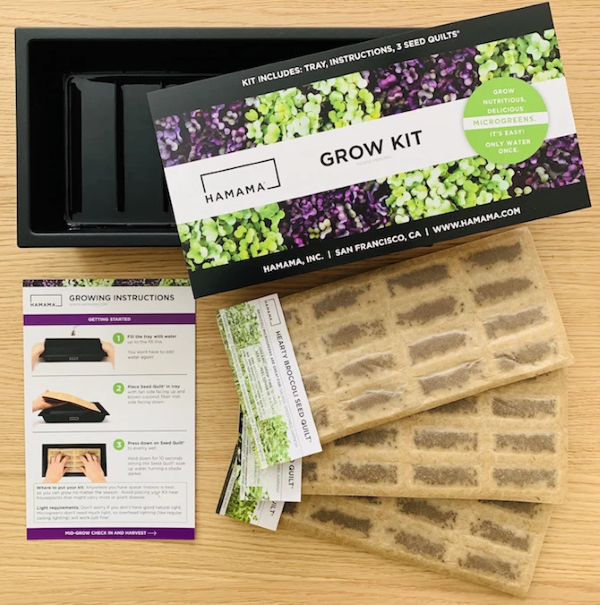
HOW TO USE?
As mentioned earlier, the Hamama Grow Kit is a fail-proof indoors microgreens growing kit that allows you to grow microgreens at home in a very easy way, with no problems at all.
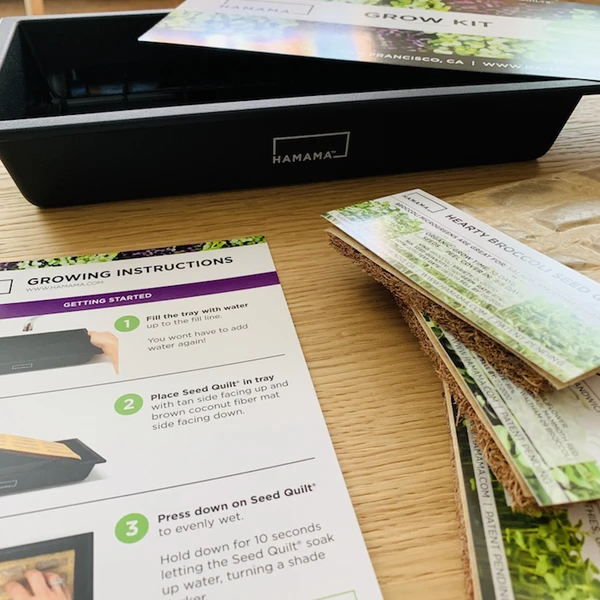
Start by opening up the included instruction outlet so that you have an easier time following these easy steps.
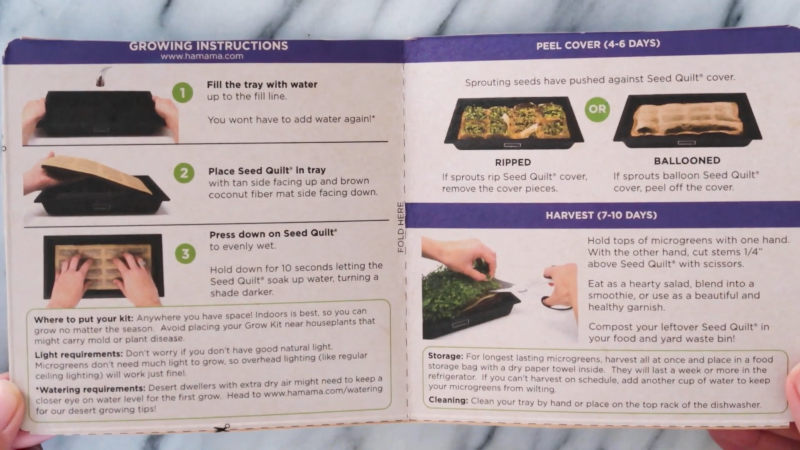 Now, to start using this indoors microgreens growing kit, the first thing you have to do is to fill up the included plastic growing tray with a reasonable amount of water. To make it extra-easy for you, there’s a MAX fill line market within the interior of the tray that’ll let you know the exact amount of water you need.
Now, to start using this indoors microgreens growing kit, the first thing you have to do is to fill up the included plastic growing tray with a reasonable amount of water. To make it extra-easy for you, there’s a MAX fill line market within the interior of the tray that’ll let you know the exact amount of water you need.
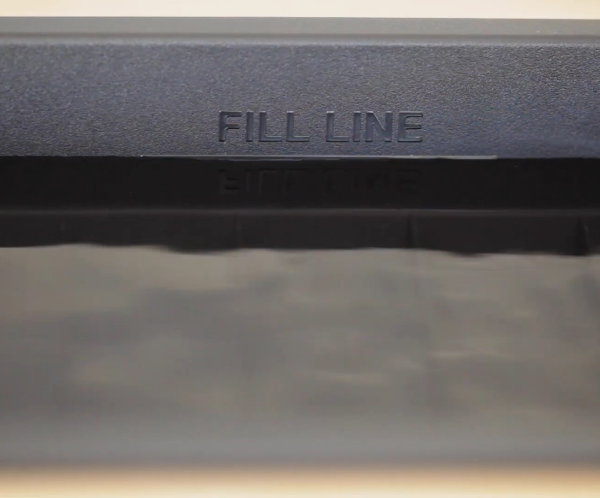
After that’s done, simply place the tray close to a reasonable light source (but it can in fact be placed somewhere with low light conditions).
Then, place one of your 3 included Seed Quilts (just one) inside the tray that you’ve already filled up with water up to its water-line marking.
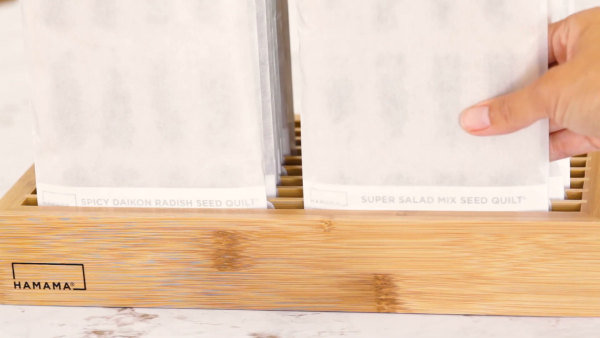
Keep in mind that you’re supposed to place your Seed Quilt with its tan side facing upwards, and its brown-coconut fiber mat side facing downwards, as that’s how the Hamama Grow Kit ensures that absolutely no seeds are dropped or wasted.
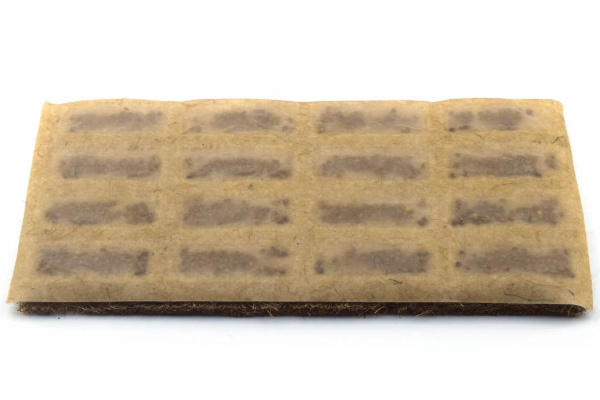
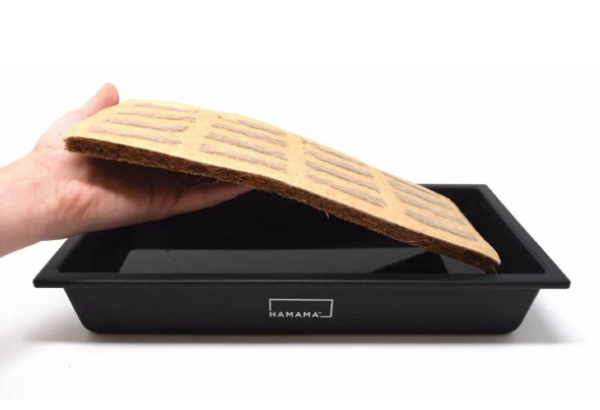
Finally, all that’s left for you to do is to press down on your installed Seed Quilt to make sure that it gets completely soaked with water. You have to press down for just around 10 seconds, and after that, your Seed Quilt should turn a shade darker than what it looked like before.
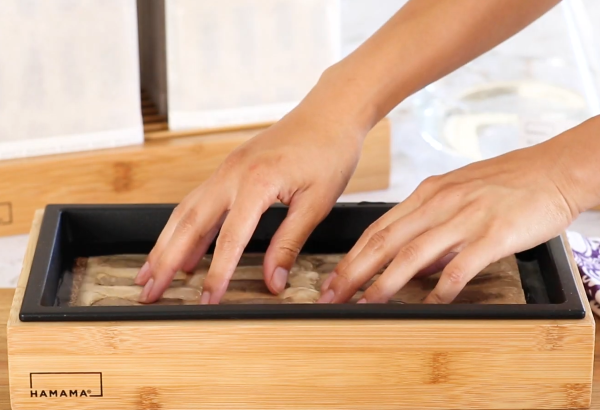 Remember that your Hamama Grow Kit should NOT be too close to other houseplants or fruit baskets for the best possible results, as you want a fresh-air environment for your little non-GMO microgreens seeds to grow strong and rich in nutrients
Remember that your Hamama Grow Kit should NOT be too close to other houseplants or fruit baskets for the best possible results, as you want a fresh-air environment for your little non-GMO microgreens seeds to grow strong and rich in nutrients
In around 4 to 6 days you should have your Hamama microgreens fully-grown and ready to harvest.
To harvest your microgreens, simply peel-off the top layer of your Seed Quilt.
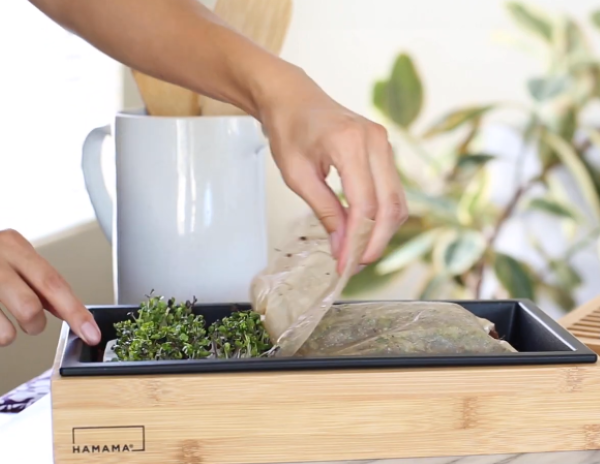
After that, simply use a pair of scissors to cut off the base of your microgreens, or alternatively, carefully pull them out by the roots, which is also edible, healthy, and rich in nutrients, just like the plants.
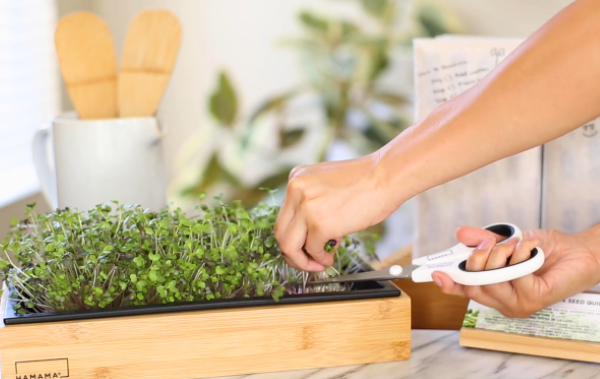
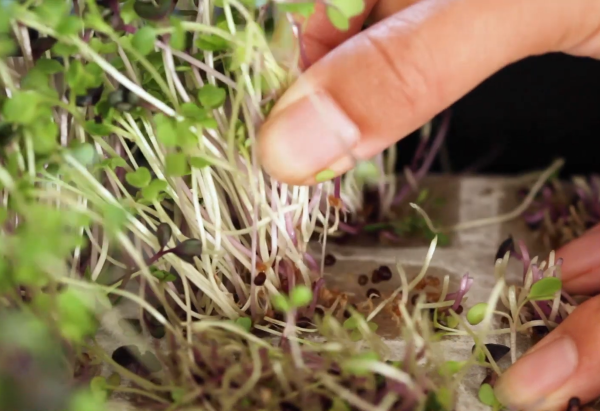
After each harvest is finished, the tray itself can be easily washed by hand or inside your dishwasher.
FINAL THOUGHTS
The Hamama Grow Kit is a fail-proof indoors microgreens growing kit that allows you to grow microgreens at home with extreme ease, as well as with no hassle whatsoever.
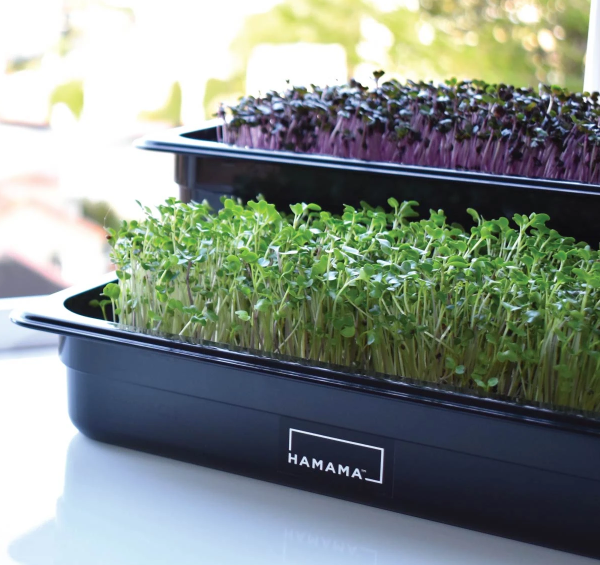
Using it to grow your microgreens at home is quite easy, as all you have to do is to add some water to its included re-usable and washable tray and then just wait a few days for its non-GMO seeds to grow into delicious, fresh and super-healthy microgreens.

The best part of it all is that this indoors microgreens growing kit even works in low light conditions, so you won’t even be needing a really bright and sunny spot, which ultimately allows you to have the kit growing its healthy microgreens near a window or even in a room with regular lighting.
In one weeks tops you’ll have your delicious microgreens ready to be harvested, which you can then use to prepare salads, to compliment your sandwiches with fresh tasty greens that are rich in nutrients, or even to prepare smoothies and garnishes.
While the Hamama Grow Kit will bring 3 Seed Quilts included for your first month of Seed Quilts, the company also offers you the option to sign up for a monthly Seed Quilt subscription service if you want to have healthy greens at your disposal on a regular basis.
Additionally, buyers can also choose to purchase the company’s beautiful Hamama Bamboo Frame (which is sold separately) in order to give their Hamama Grow Kit a more natural look.
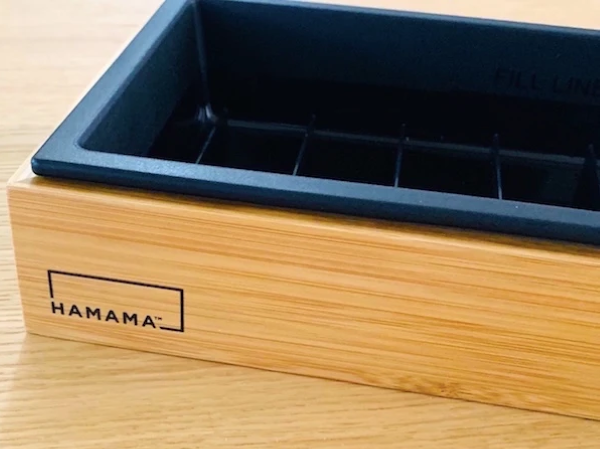
Lastly, keep in mind that currently, the Hamama Grow Kit is available exclusively in the US, so sadly, any of our readers that are not US residents will not be able to purchase the Hamama Grow Kit (at least for the moment, that is).
If you’re interested in buying the Hamama Grow Kit (Starter Kit), it will cost you $49 for a one time purchase, or $35 for a subscription based service with regular Seed Quilts delivered to your door every month. For that matter, it will cost you $17 to have 3 Seed Quilts delivered to your door on a monthly basis. You can order your Hamama Grow Kit online right now, directly from Hamama’s official shopping page, which you can access via this link.





